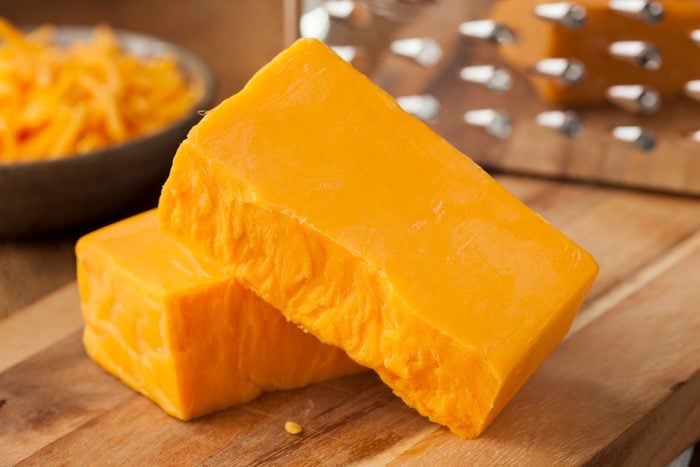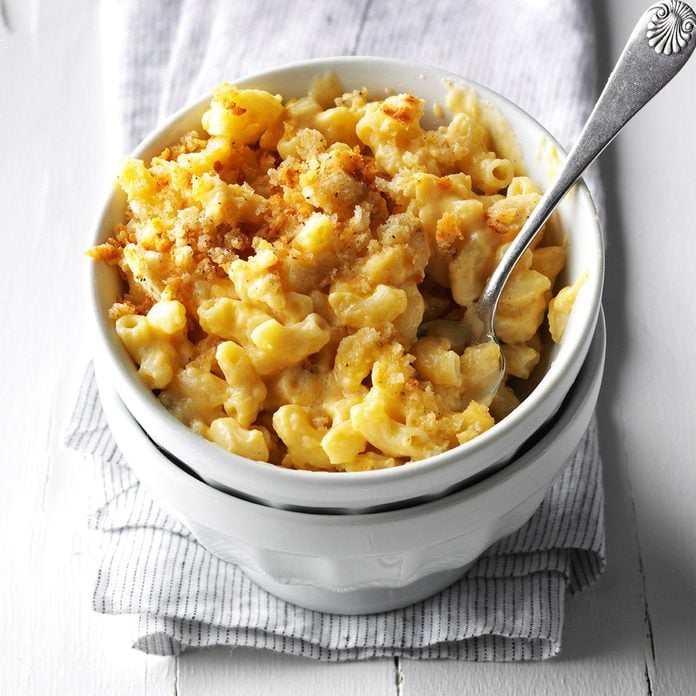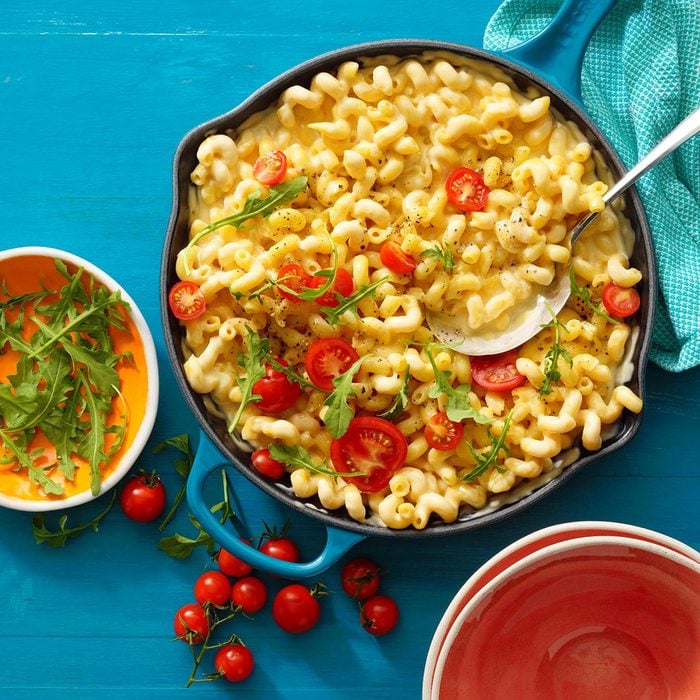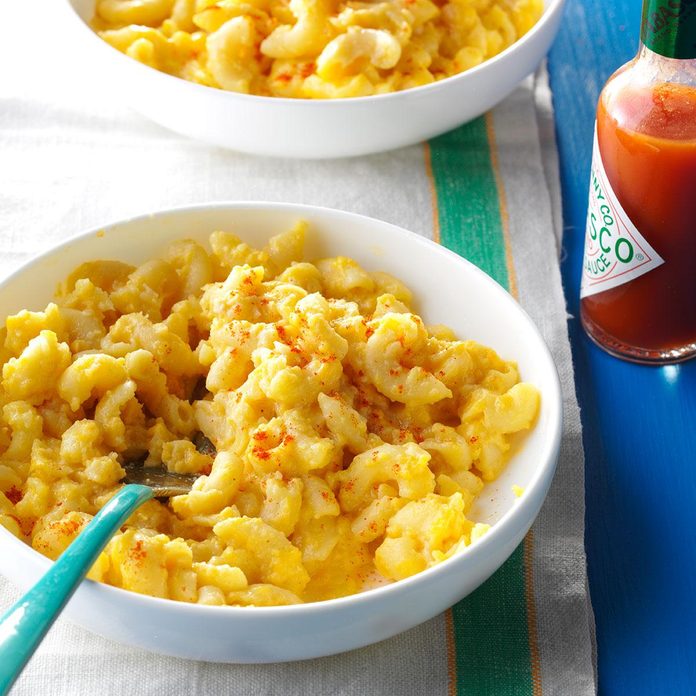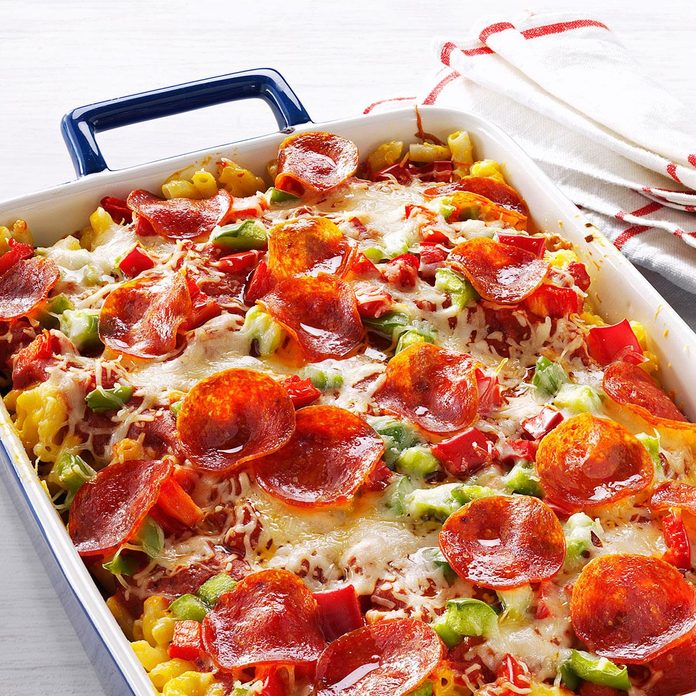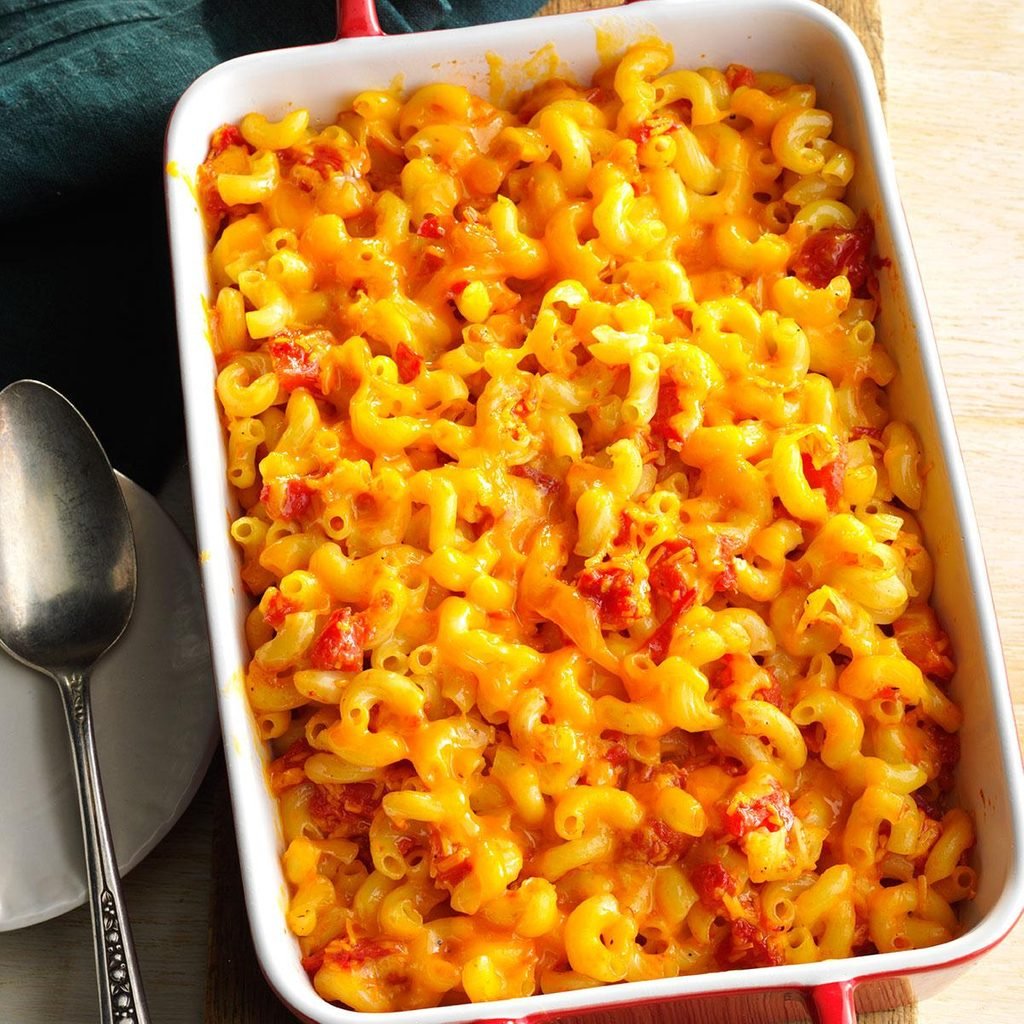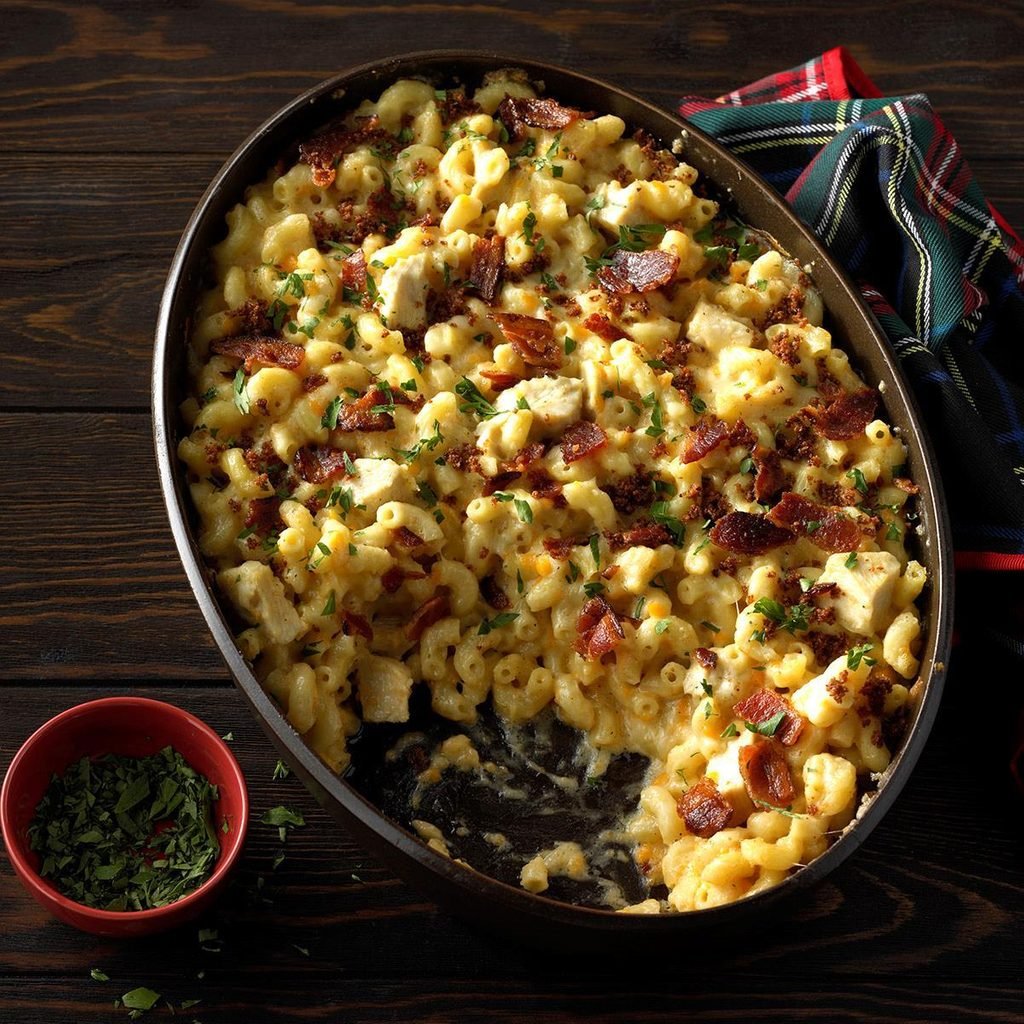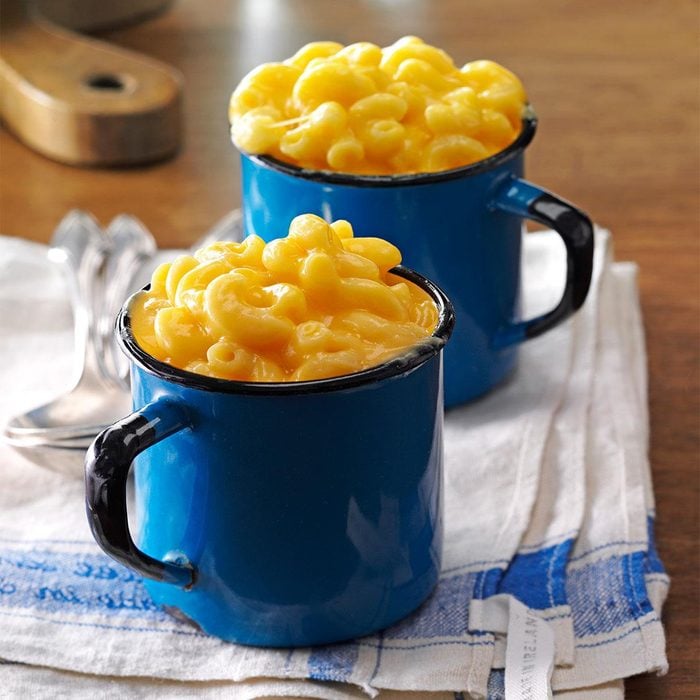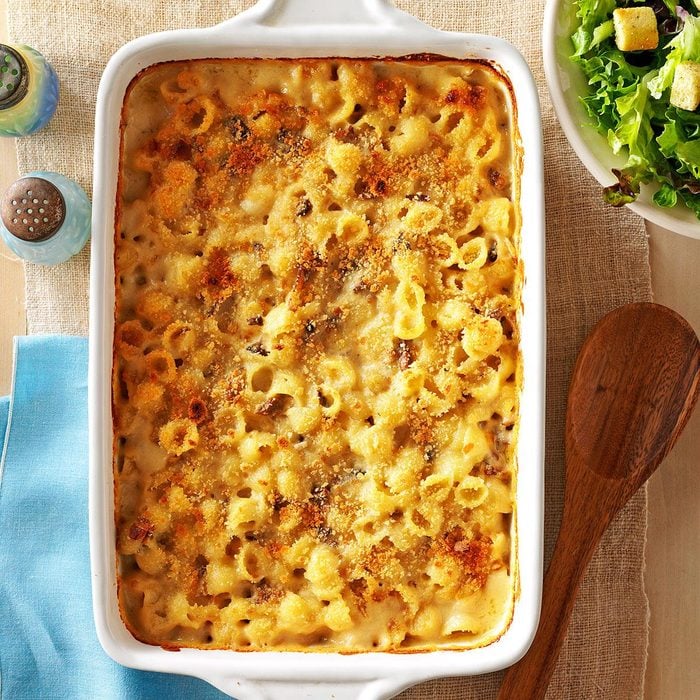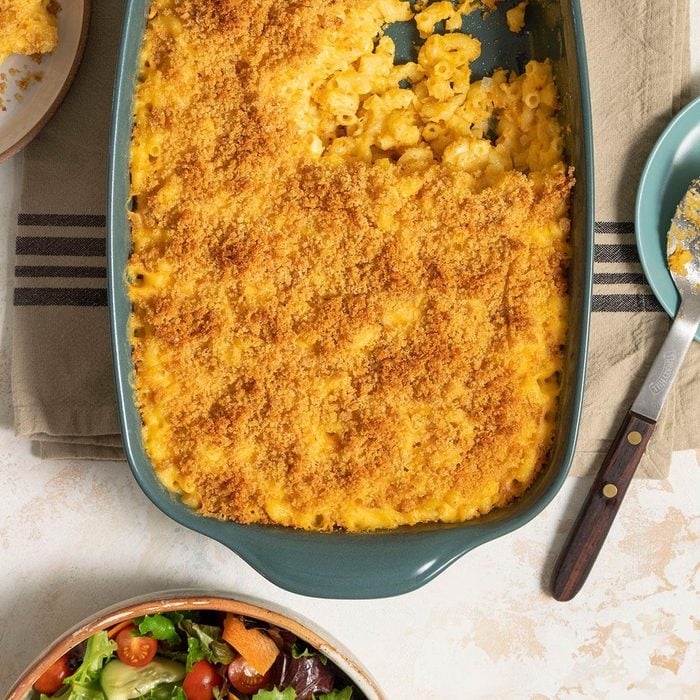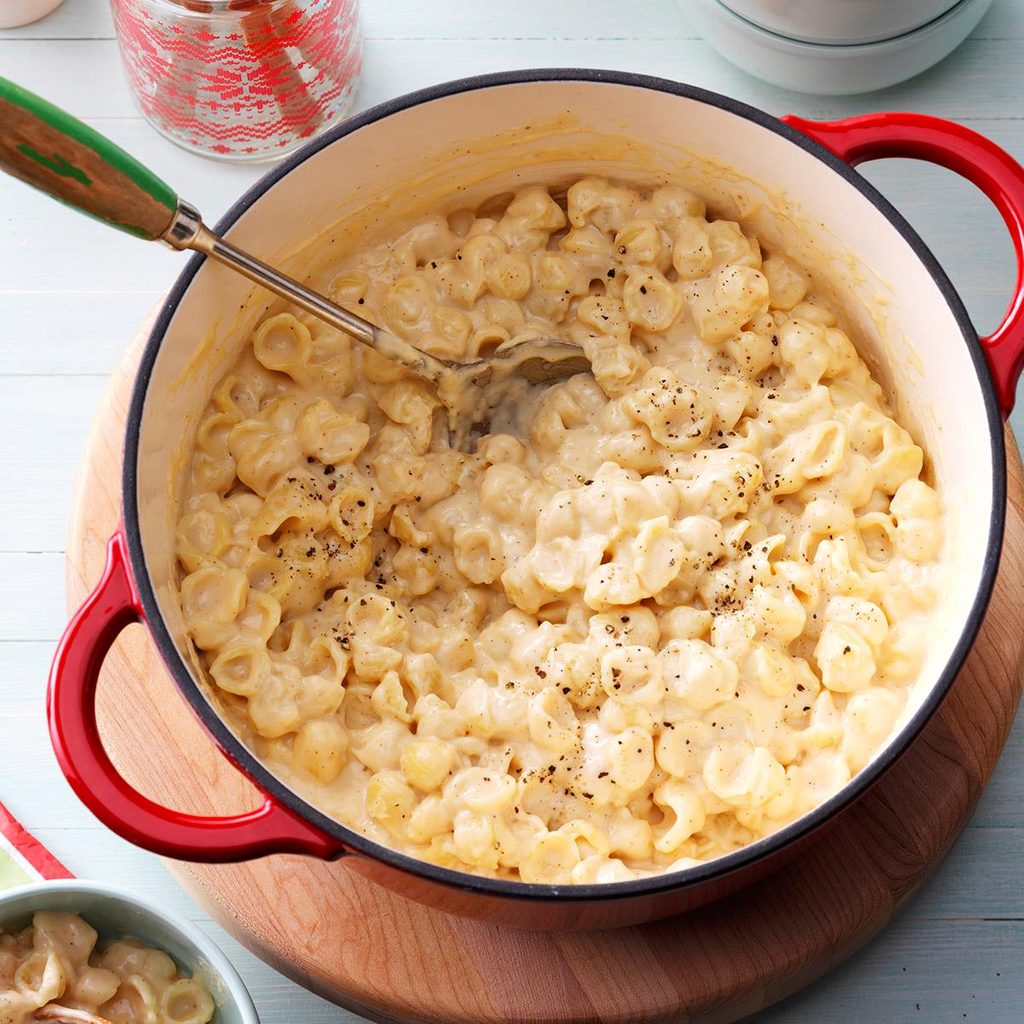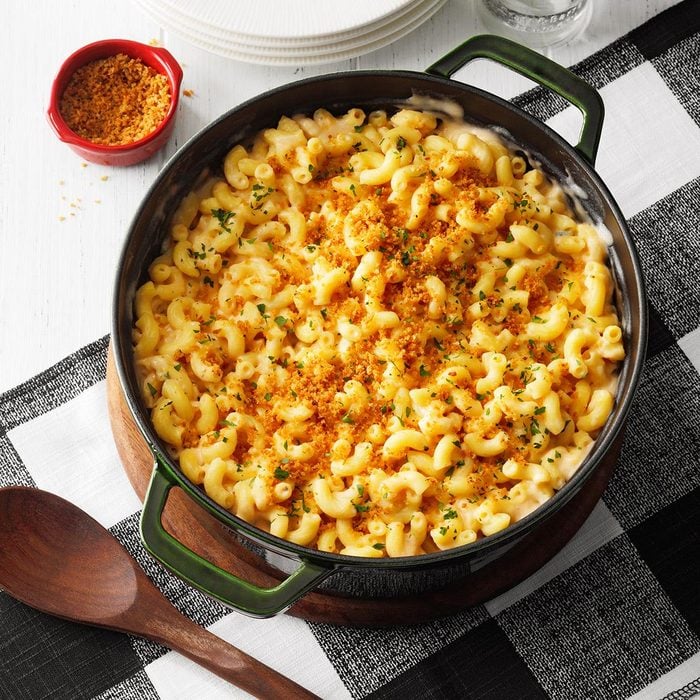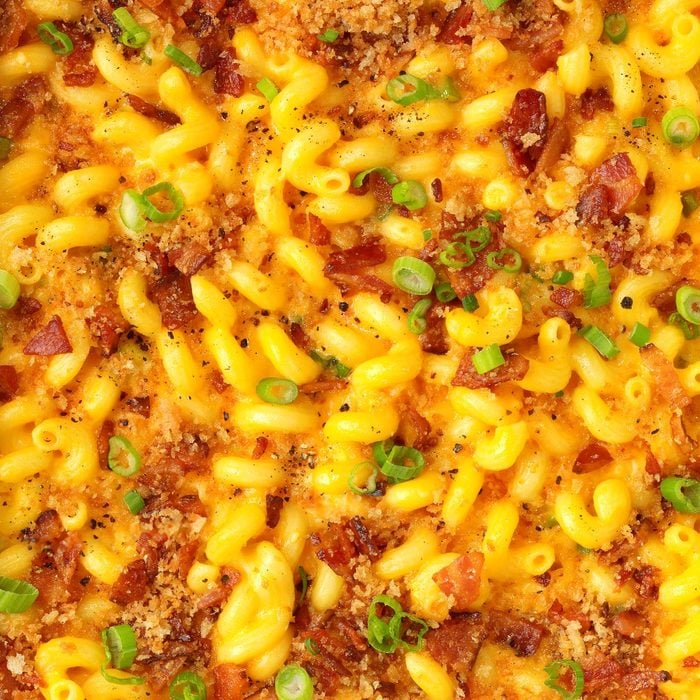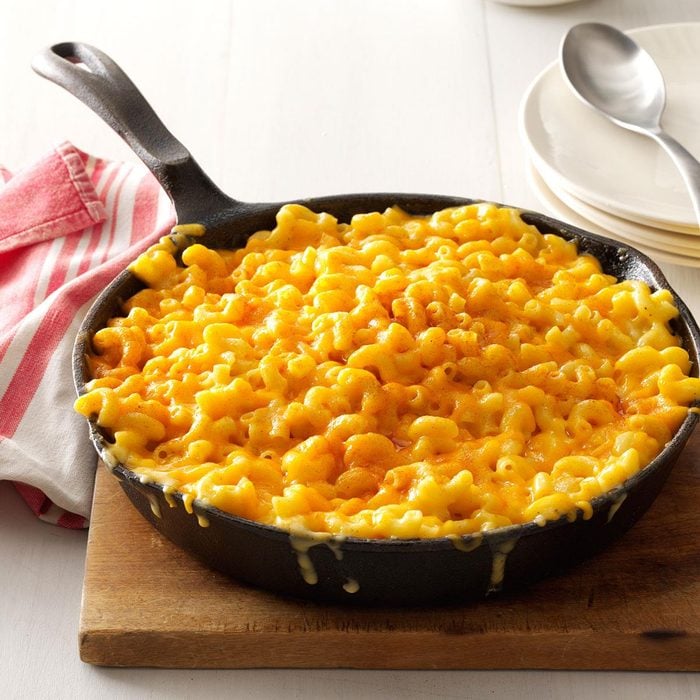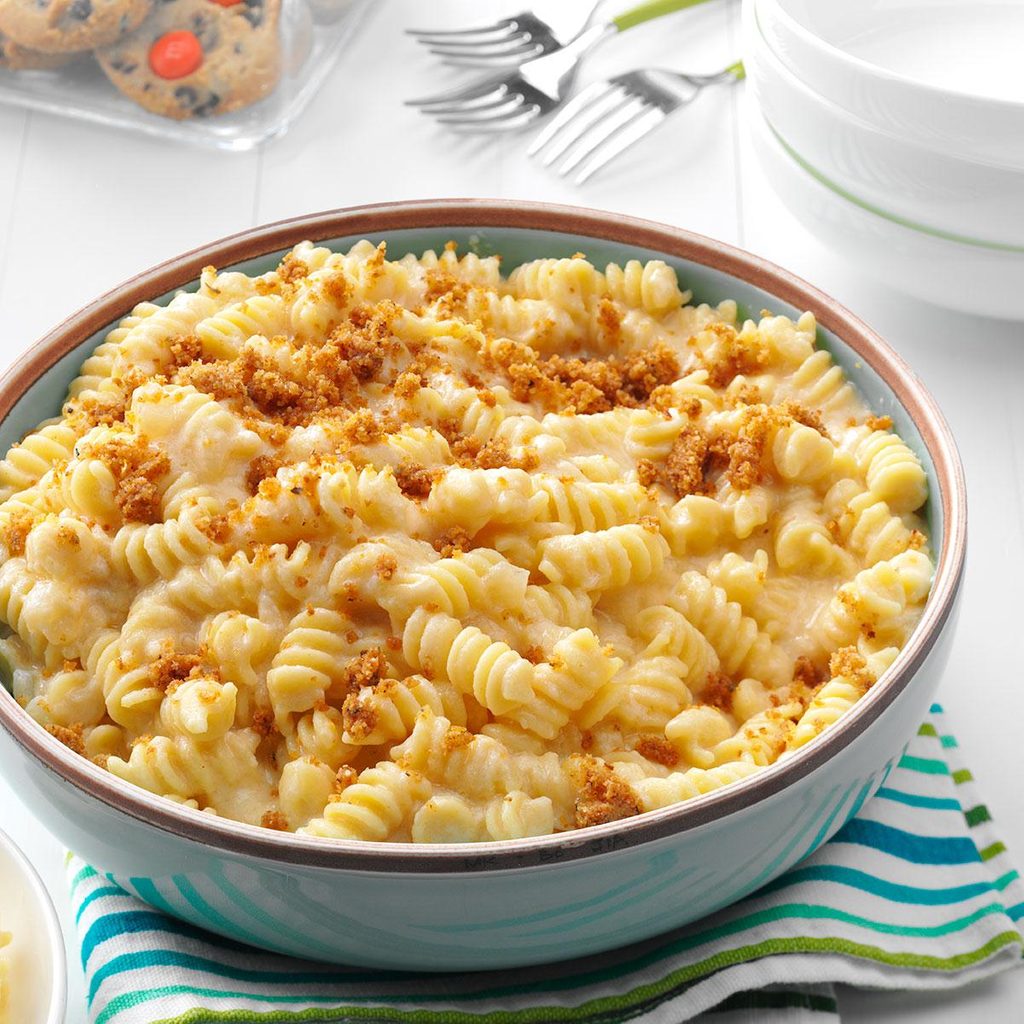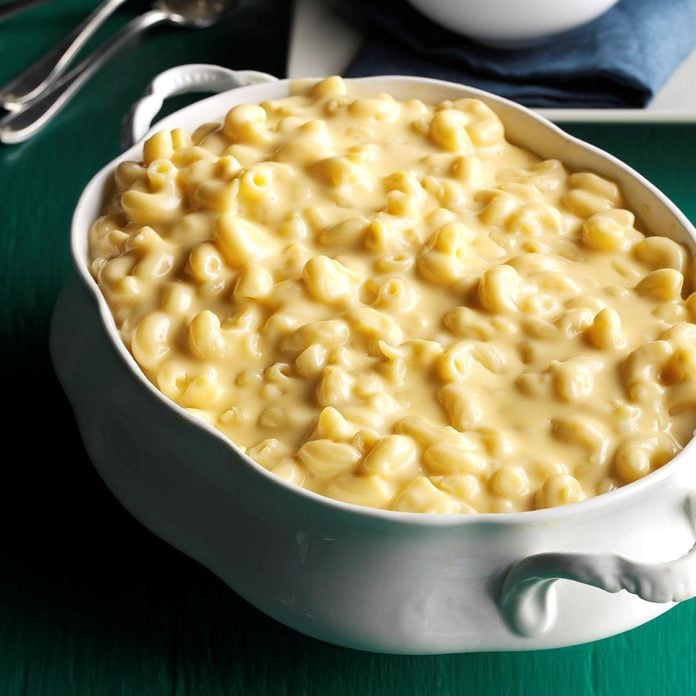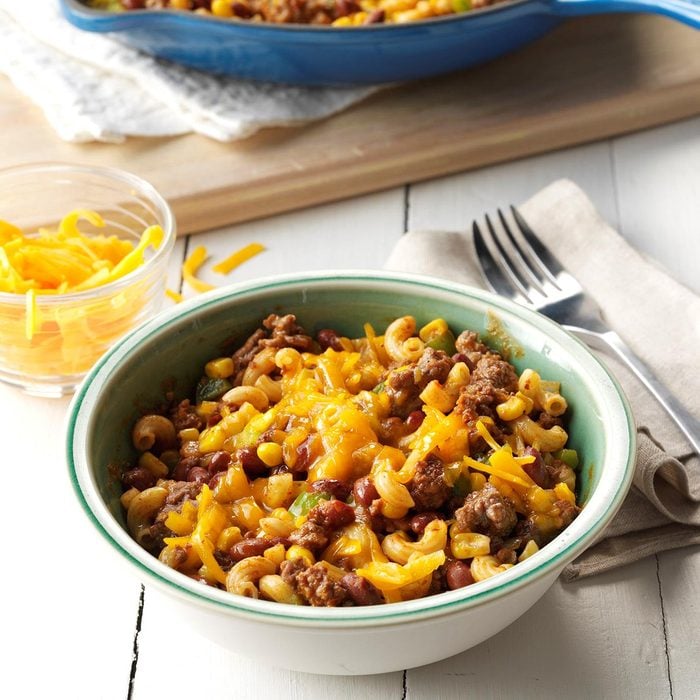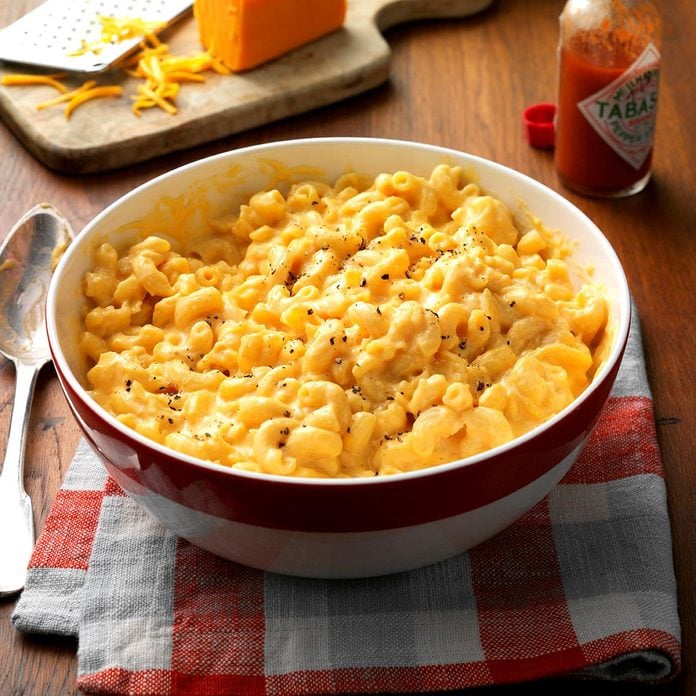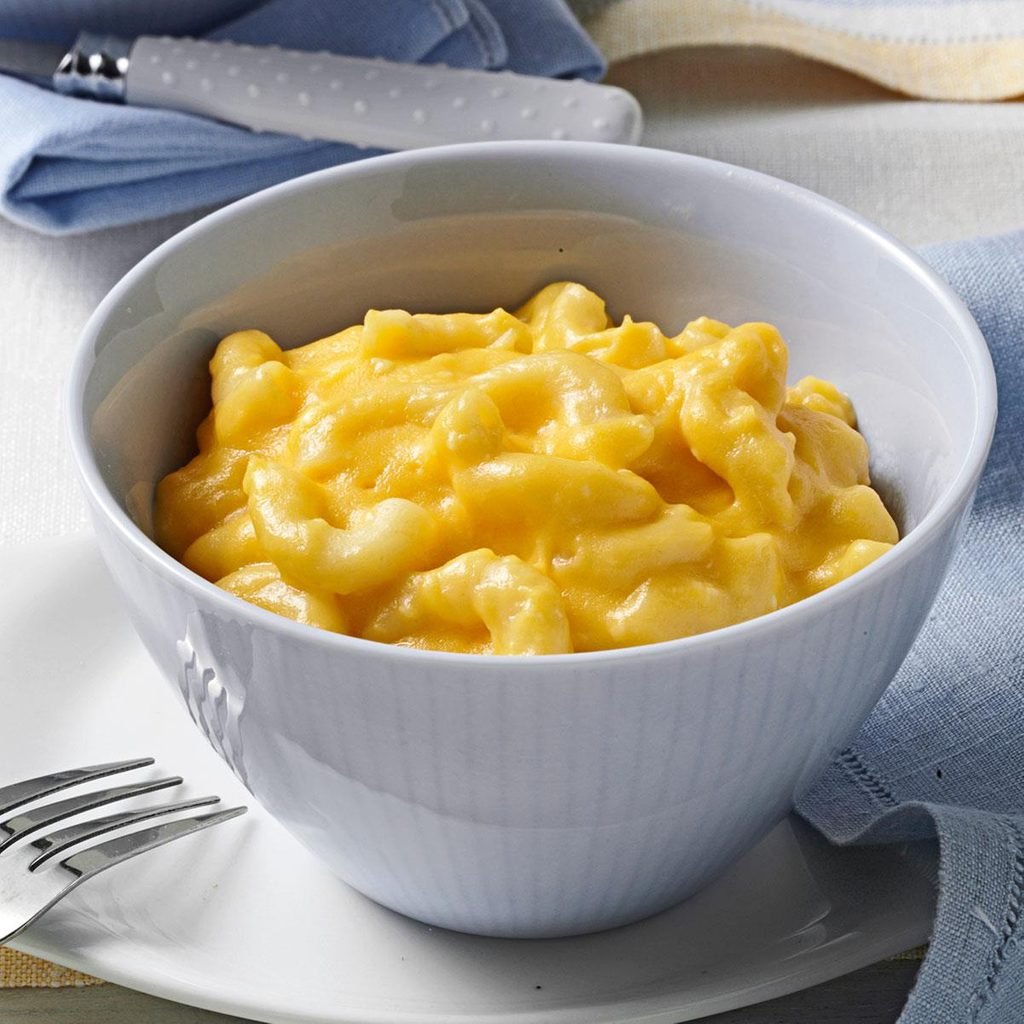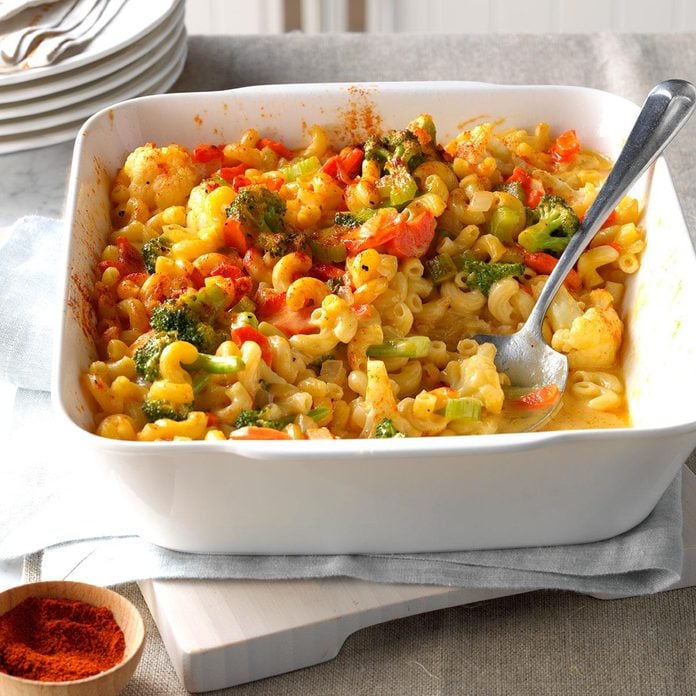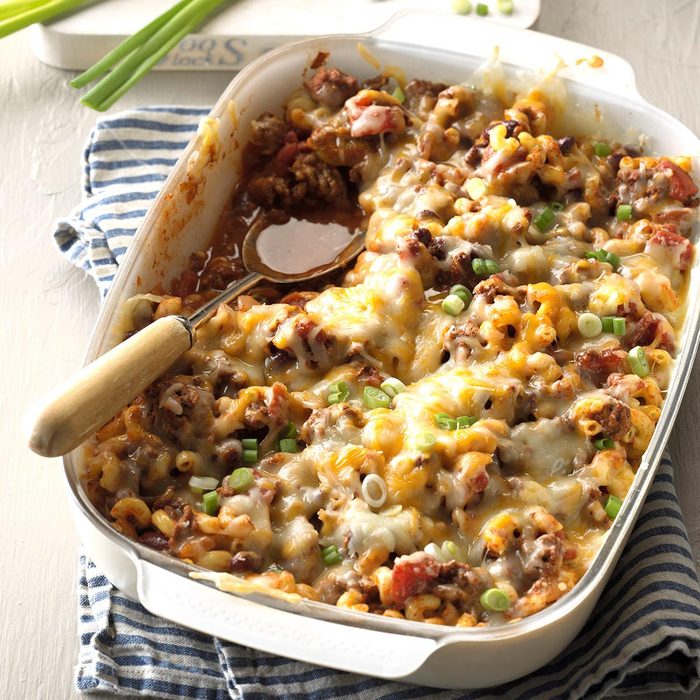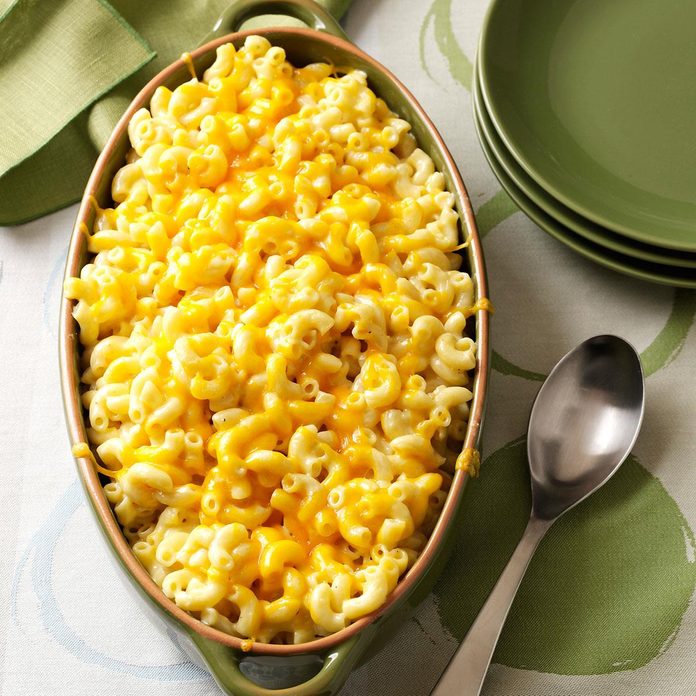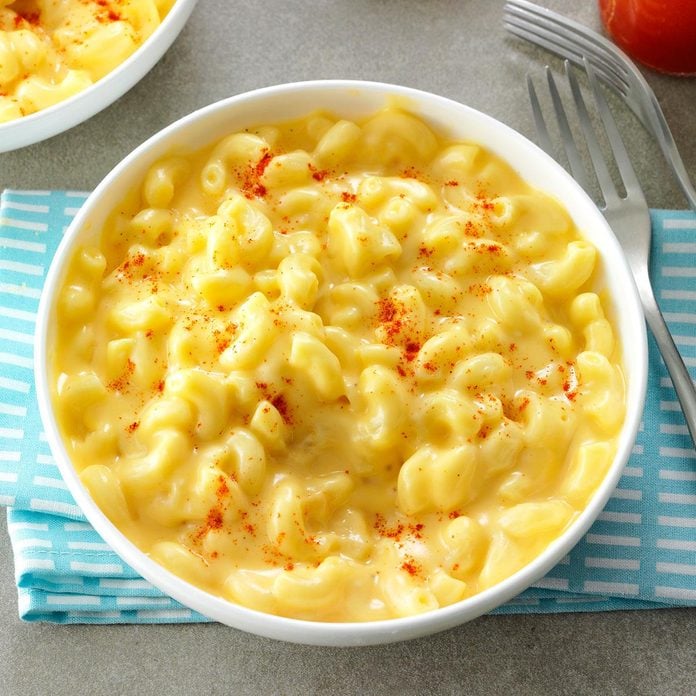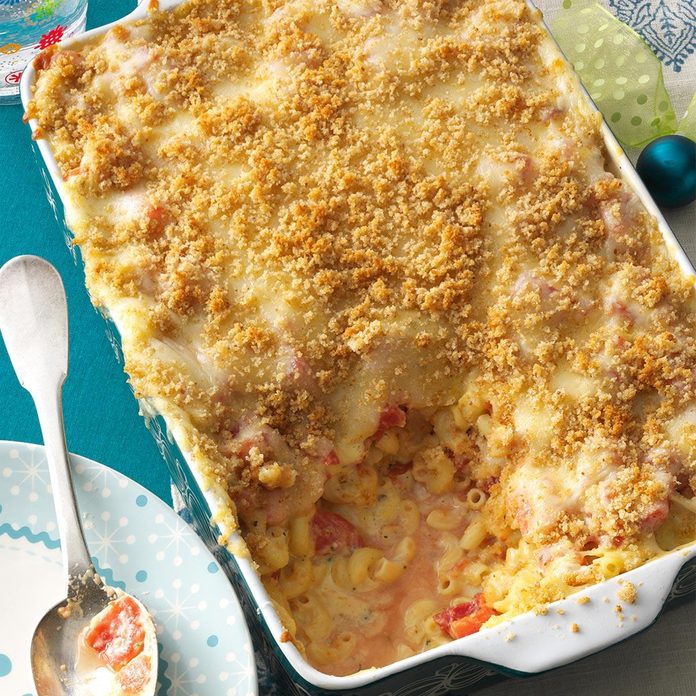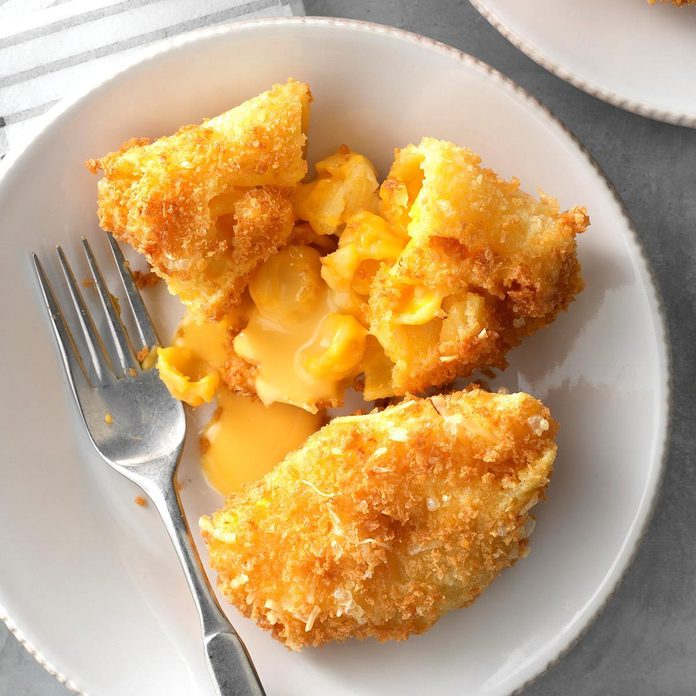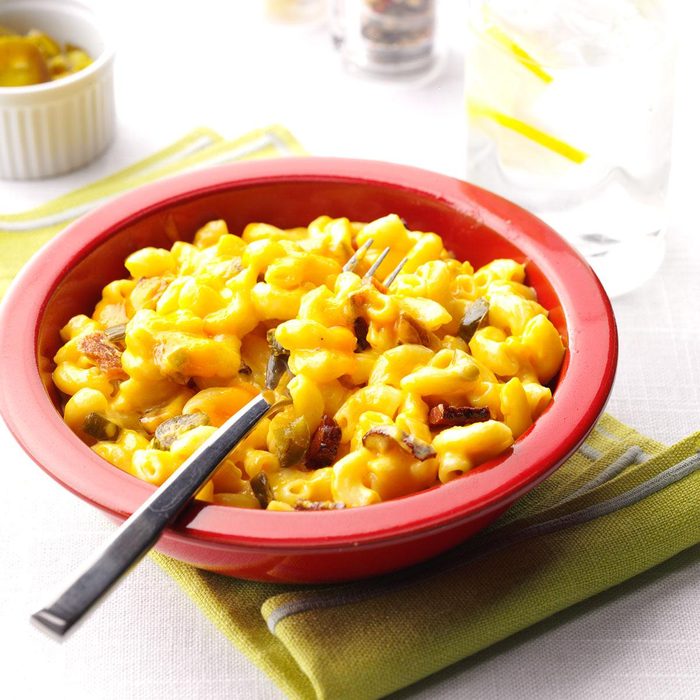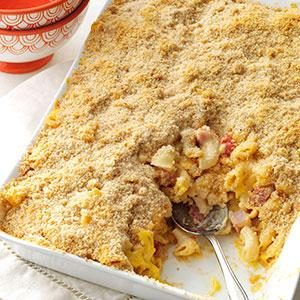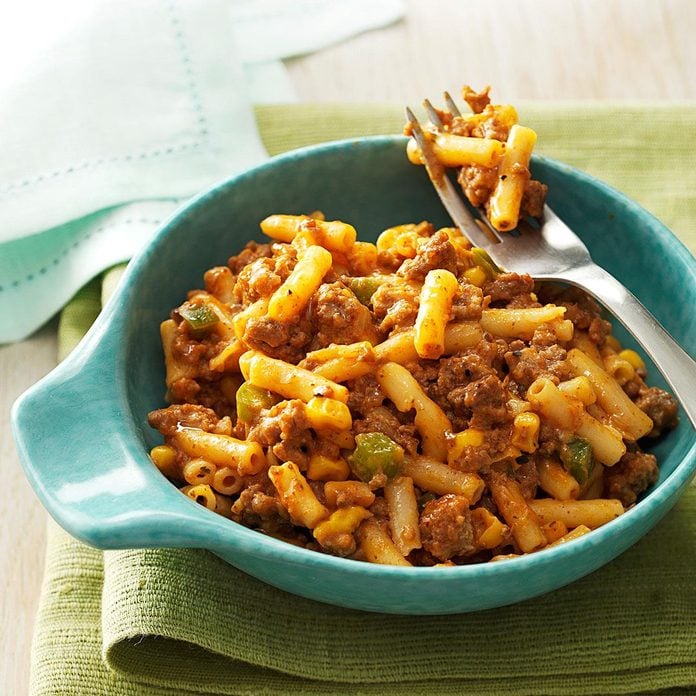There’s so much to love about cheese. And while some of us may count Gouda or American cheese as our favorite, cheddar cheese is often the most popular choice of all. You know cheddar can range from sharp or mild with a creamy texture. But why is cheddar cheese orange?
If you’ve ever wondered about this while making mac and cheese, here’s the explanation.
Why Is Cheddar Cheese Orange?
Beta-Carotene in Grass
Several centuries ago, English cheesemakers produced cheese with a yellow tone thanks to the milk from certain cows. These cows, often Jersey and Guernsey breeds, ate a lot of grass that was packed with beta-carotene, which gave the milk an orange-yellow tone.
Back then, cheddar cheese with a yellow hue was seen as a sign of quality. But as fraudsters have existed in some form for centuries, cheesemakers would use carrot juice or marigold to color their pale cheese and make it look higher quality. The tendency of adding color to cheese stuck around—and now most of us think cheddar cheese is supposed to be orange!
Annatto
Of course, in the modern era, most cheesemakers aren’t coloring cheddar with marigold or carrot juice. Nowadays, people mostly use annatto, a food coloring made from the achiote tree, which gives it that orange hue we look for. The idea is not to change the flavor of the cheese at all, but to make the color more of what history has told us to expect.
Is All Cheddar Cheese Orange?
Nope. Some cheesemakers, particularly in the northeastern United States, choose to produce to white cheddar cheese. That won’t affect the flavor of your cheddar cheese recipes, though it might confuse your brain a bit. If your cheese of the month club sends you a block of white cheddar, don’t worry—it’ll still have a familiar flavor and texture.
Every Way to Make Mac and Cheese
Best Ever Mac & CheeseTo make this amazing mac, I make a sauce loaded with three different cheeses to toss with the noodles. When baked, it's gooey goodness with a crunchy topping that...don't get me started! —Beth Jacobson, Milwaukee, Wisconsin
Skillet Mac & CheeseThis creamy mac ’n’ cheese is so simple it’s almost too easy! —Ann Bowers, Rockport, Texas
Slow-Cooker Mac and CheeseThis classic casserole is a rich and cheesy meatless main dish. I've never met anyone who didn't ask for a second helping. —Bernice Glascoe, Roxboro, North Carolina
Pizza Macaroni & CheeseMy grandma made this for us once when she came to visit and I never forgot just how good it was. Since my kids love anything with pepperoni and cheese, I thought they'd enjoy it just as much as I did. —Juli Meyers, Hinesville, Georgia
My Mother's Mac and CheeseI remember my mother sending me to the store for 15 cents worth of cheese. The butcher would cut off a slice from a gigantic wheel covered with a wax-coated cloth. Mother would then blend that cheese into this tasty dish. Today, the memory of her cooking is like food for my soul. —Phyllis Burkland, Portland, Oregon
Chicken Ranch Mac & CheesePrep once and feed the family twice when you double this chicken mac and cheese and freeze half of it. I created it for the people I love most, using ingredients they love most. —Angela Spengler, Tampa, Florida
Easy Slow-Cooker Mac & CheeseMy sons always say I'm the best mom in the world when I make this creamy mac-and-cheese perfection. Does it get any better than that? —Heidi Fleek, Hamburg, Pennsylvania
Porcini Mac & CheeseThis recipe was inspired by a mushroom mac and cheese I had at a local restaurant. I incorporated the fall flavor of a pumpkin ale, and it turned out better than the original. —Laura Davis, Chincoteague, Virginia
Baked Mac and CheeseEven people who have had their own homemade baked macaroni and cheese recipe for years ask for mine when they taste this crumb-topped version. For the best baked mac and cheese, use extra-sharp cheddar cheese for more flavor. —Shelby Thompson, Dover, Delaware
White Cheddar Mac & CheeseMy mac and cheese is simple and has lots of flavor from the cheeses and ground chipotle chile. I use conchiglie pasta because its shape allows more melted cheese to pool inside. Yum! —Colleen Delawder, Herndon, Virginia
Bistro Mac & CheeseI like to serve this mac & cheese with a salad and crusty bread. It's a satisfying meal that feels upscale, but will fit just about any budget. And because the Gorgonzola is so mild in this dish, even the kiddos will go for it. —Charlotte Giltner, Mesa, Arizona
Creamy Cavatappi & CheeseDive fork-first into oodles of noodles baked to bubbly perfection and coated with a to-die-for sharp cheddar cheese sauce in this cavatappi, a grown-up version of mac and cheese. Hot sauce lends mild heat that’s delectable with the smoky topping. —Barbara Colucci, Rockledge, Florida
Homey Mac & CheeseI also call this "my grandson's mac and cheese." Zachary has been to Iraq and Afghanistan with both the Marines and Navy, and I've been privileged to make his favorite casserole for him for over 20 years. —Alice Beardsell, Osprey, Florida
Triple Cheese TwistsOur stovetop macaroni and cheese is extra special, thanks to the buttery crumb topping. —Taste of Home Test Kitchen
Potluck Macaroni and CheeseYou'll always have a winner at the potluck when you bring macaroni and cheese. Here's an extra-rich, creamy version for the slow cooker. —Jennifer Blondek, Chicopee, Massachusetts
Quick Chili MacThis combines chili with one of my favorite pasta dishes. I often serve it for company or potlucks and occasionally add taco seasoning or use beanless chili and add black beans. —Lee Steinmetz, Lansing, Michigan
Makeover Slow-Cooked Mac 'n' CheeseThis recipe is a clear example of comfort food at its finest; it's rich, hearty and extra cheesy. And because it's made in the slow cooker, it's also extremely easy. —Shelby Molina, Whitewater, Wisconsin
Buttermilk Mac 'n' CheeseOnce you taste this version of an all-time favorite comfort food, you may never make the regular kind again. It's my most-requested recipe. —Donna Fancher, Lawrence, Indiana
Veggie Macaroni & CheeseThis creamy mac and cheese definitely doesn't come from a box! Fresh veggies add crunch and color and will leave everyone asking for seconds. —Marsha Morril, Harrisburg, Oregon
Chili Mac CasseroleThis cheesy casserole uses several of my family's favorite ingredients, including macaroni, kidney beans, tomatoes and cheese. Just add a leafy salad for a complete meal. —Marlene Wilson, Rolla, North Dakota
Over-the-Top Mac ‘n’ CheeseThis delicious dish is the ultimate comfort food. A blend of five cheeses, it makes a beautiful entree or a special side. I served it at our Thanksgiving dinner, and it received rave reviews. —Connie L McDowell, Greenwood, Delaware. Whether you're hosting this year's meal or plan to be a guest, these
mac and cheese Thanksgiving recipes will be a hit with everyone at the table.
Stovetop Macaroni and CheeseWhen I was a girl, Mama used Texas longhorn cheese in this recipe. After it melted all over the macaroni, I loved to dig in and see how many strings of cheese would follow my spoonful. —Imogene Hutton, Brownwood, Texas
Italian Three-Cheese MacaroniMy husband is a self-proclaimed mac-and-cheese connoisseur and says that this is his favorite version. The Italian seasoning and tomatoes really complement the pasta and cheeses. —Adriane Mummert, Lancaster, Pennsylvania
Spinach Beef Macaroni BakeThis hearty casserole is great for a family reunion or church supper. I've also made half the recipe for family gatherings. It's become a special favorite of my grandson-in-law and great-grandson, who often ask me to serve it when they're visiting. —Lois Lauppe, Lahoma, Oklahoma
Deep-Fried Mac & Cheese ShellsI created this deep fried mac and cheese recipe for my husband. He describes this recipe as unbelievably delicious because of the crispy deep-fried coating on the outside and the creamy richness on the inside. —Shirley Rickis, The Villages, Florida
Jalapeno-Bacon Mac & CheeseAll my dishes use ingredients that are usually sitting in the fire department pantry. I just adjust amounts depending on how many people we have on duty that day. This is always popular. —Nick Kaczor, New Hudson, Michigan
Deluxe Baked Macaroni and CheeseI've been cooking and baking for many years, but I've only recently begun creating my own recipes. By adding diced ham, tomatoes, several cheeses and a hint of Dijon mustard, I turned this super creamy mac and cheese into the ultimate comfort food. —Kathy Yarosh, Apopka, Florida
Hearty Mac & Cheese“Whether a cold winter night or rainy summer day, this is quick-and-easy comfort food at its very best!” And a great way to jazz up boxed macaroni mix. —Carol Wohlgemuth, Riding Mountain, Manitoba
